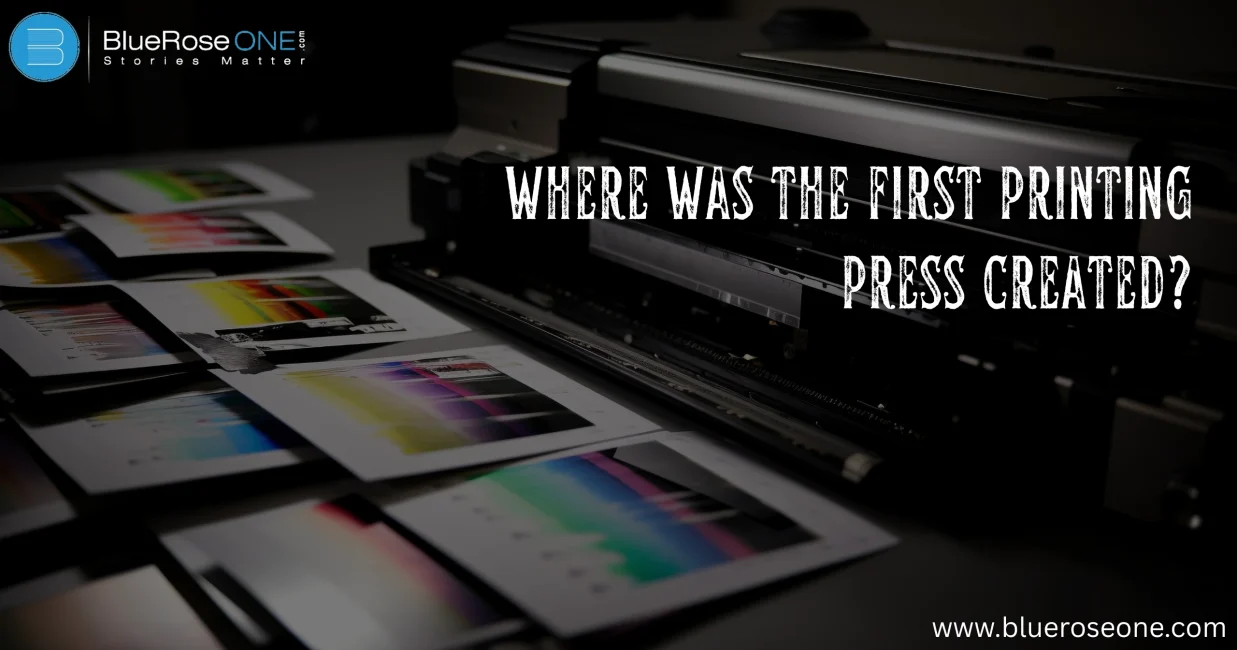Before social media, before typewriters, even before newspapers there was the printing press. It’s one of the most important inventions in human history, revolutionizing the way we share information.
Imagine living in a world where books were handwritten and cost a fortune. Only the elite could afford them. Then boom along came the printing press, and suddenly knowledge wasn’t locked behind castle doors anymore.
Life Before the Printing Press
Before the invention of the printing press, life was dominated by handwritten manuscripts, which made books rare, expensive, and accessible only to the elite. Scribes, often monks, spent months or even years copying texts by hand, leading to limited circulation of knowledge.
Education was restricted, and literacy rates remained low among the general population. Most texts were religious or scholarly in nature, and any errors had to be painstakingly corrected manually. The slow process of book production also meant that new ideas spread very slowly. As a result, cultural and intellectual growth was constrained by the scarcity of written materials.
You may also like: Top 10 Types of Novels That Dominate Bestseller Lists
The Origins of Printing
Long before Gutenberg, other cultures were already experimenting with ways to replicate text and images.
Ancient Printing Methods in Asia
Woodblock Printing in China
One of the world’s oldest printing techniques, woodblock printing originated in China during the Tang Dynasty (618–907 AD). Using this method, whole pages of text or images were carved into wooden blocks, which were subsequently inked and pressed onto paper.
It was essential to the dissemination of Confucian classics and Buddhist texts throughout Asia. The first known surviving printed book created in this manner is the Diamond Sutra, which was created in 868 AD.
Movable Type in Korea
With the development of movable metal type under the Goryeo Dynasty in the early 13th century, Korea transformed printing and outperformed Gutenberg’s press by more than 200 years. The Jikji, printed in 1377, is the earliest book known to have been printed in this manner.
By using bronze type instead of woodblocks, Korean artists were able to print more quickly and repeatedly. This discovery underscores Korea’s crucial yet frequently disregarded role in printing history and greatly improved literacy and recordkeeping in East Asia.
Influence of Asian Inventions on Europe
Ancient Asian printing processes, particularly those from China and Korea, had a significant impact on Europe’s development of printing technology. The Chinese development of woodblock printing in the Tang dynasty, followed by moveable type printing by Bi Sheng in the Song dynasty, established the framework for mass communication.
These inventions spread west along trading routes such as the Silk Road. European scholars subsequently adopted similar techniques, culminating in Gutenberg’s press, which revolutionized printing in the West by the mid-15th century.
You may also like: The Mighty Red by Louise Erdrich: A Deep Dive into Her Latest Novel
Johannes Gutenberg – The Man Behind the Machine
A Brief Biography
Johannes Gutenberg, born around 1400 in Mainz, Germany, was a skilled inventor, goldsmith, and printer. He is best known for developing the movable-type printing press in the 15th century. Gutenberg’s invention revolutionized communication, making books more accessible and sparking the spread of knowledge during the Renaissance and beyond.
What Gutenberg Invented (And What He Didn’t)
Johannes Gutenberg invented the movable-type printing press around 1440 in Mainz, Germany. While Gutenberg did not invent printing or moveable type, which had been in Asia for centuries, he revolutionized the method by combining movable metal type with a mechanical press, oil-based ink, and a mass-production system.
His invention significantly boosted printing speed and precision, making books more accessible and accelerating the spread of knowledge throughout Europe throughout the Renaissance.
The First Printing Press in Mainz, Germany
Why Mainz Was the Perfect Spot
Mainz was an ideal location for the first printing press because of its strategic location along the Rhine River, making it a booming center for trade and communication.
As a religious and economic hub, it provided access to educated clergy, affluent patrons, and talented artisans. Additionally, the city’s political stability and closeness to universities fostered creativity and the rapid diffusion of Gutenberg’s innovative invention.
Timeline of Gutenberg’s Work
- 1440: Gutenberg begins experimenting.
- 1450: He secures funding and ramps up production.
- 1455: The Gutenberg Bible is printed.
What Was Printed First?
While some early test pages and indulgences came before, the first major project was the Gutenberg Bible, also called the 42-line Bible.
You may also like: Top 15 Short Novels to Read in a Weekend
Spread of the Printing Press in Europe
Italy, France, and England Join the Movement
Gutenberg’s printing press changed Germany in the mid-15th century, and the innovation spread quickly throughout Europe. By the 1460s, Italy had embraced the press, particularly in Rome and Venice, which became significant hubs for book manufacturing and humanist literature.
France followed in the 1470s, with Paris becoming a center of scholarly and religious printing. England embraced the technology in 1476, when William Caxton established the first English press in Westminster.
These countries were instrumental in increasing literacy, conserving classical texts, and supporting intellectual movements such as the Renaissance and Reformation, firmly establishing print culture throughout the continent.
Explosion of Knowledge and Literacy
The printing press’s expansion throughout Europe resulted in an unparalleled surge in literacy and knowledge. The press, which Johannes Gutenberg created in Mainz, Germany, in 1440, transformed the creation and dissemination of information.
With hundreds of printing presses in operation in major European cities by the 1500s, books became much more affordable and available to a wider audience. The expansion of middle-class literacy and the dissemination of novel concepts, like those of the Renaissance and the Reformation, were both aided by this accessibility. Across the continent, intellectual curiosity bloomed and education spread quickly.
You may also like: Mindset Shift by Sharani Ponguru | Book Review
Comparison with Modern Printing
From Manual to Digital
When Johannes Gutenberg created the first printing press in the fifteenth century, it was manually operated and movable type was arranged. Although it was time-consuming, this method transformed the book creation process.
Modern printing, on the other hand, has developed into a digital process that swiftly and effectively produces high-quality texts using computers, laser printers, and offset printing equipment.
Instant editing, quicker production, and mass customization are all made possible by digital printing, demonstrating the enormous advancements in technology since Gutenberg’s day.
Legacy of Gutenberg’s Innovation
The modern printing industry began when Gutenberg invented the movable-type printing press in Mainz, Germany, approximately 1440. By shattering the monopoly of hand-copied manuscripts and making books more widely available and reasonably priced, his press transformed the dissemination of knowledge.
This invention made mass communication possible and ignited the Renaissance’s fast spread of knowledge. Gutenberg’s fundamental ideas of efficiency, repeatability, and information democratization are continuously built upon by modern offset and digital printing techniques.
You may also read: Nosferatu: The History of the First Vampire in Film
Conclusion
So, where was the first printing press created? Right in Mainz, Germany, in the mid-15th century by Johannes Gutenberg. But its impact rippled across the world. From ancient Asian roots to a German workshop, and finally to your bookshelf or screen the journey of the printing press is a testament to humanity’s hunger for knowledge.
It gave rise to revolutions, broke down walls of ignorance, and brought us into the modern age. If you’re reading this today, you have Gutenberg to thank.
Frequently Asked Questions
The Chinese and Koreans developed printing methods centuries before Gutenberg. Woodblock printing was used in China as early as the 7th century, and movable metal type was invented in Korea around the 13th century.
The Gutenberg Bible, also known as the 42-line Bible, was the first major book printed using movable type in Europe.
It made books affordable and accessible, leading to higher literacy rates, the spread of knowledge, and revolutions in science, religion, and education.
No full original presses have survived, but several of Gutenberg’s original printed works, including parts of his Bible, are preserved in museums and libraries.
Books became cheaper, more accurate, and widely available. It transformed reading from a privilege of the elite into a common activity for all classes.
















